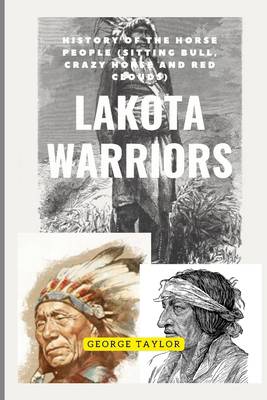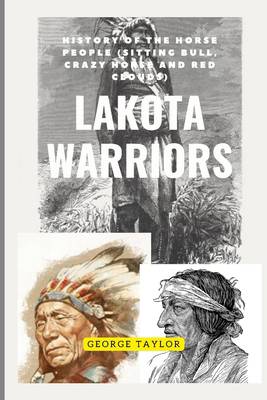
- Afhalen na 1 uur in een winkel met voorraad
- Gratis thuislevering in België vanaf € 30
- Ruim aanbod met 7 miljoen producten
- Afhalen na 1 uur in een winkel met voorraad
- Gratis thuislevering in België vanaf € 30
- Ruim aanbod met 7 miljoen producten
Zoeken
Lakota Warriors
History Of The Horse People (Sitting Bull, Crazy horse, And Red Clouds).
George Taylor
Paperback | Engels
€ 16,45
+ 32 punten
Omschrijving
The Lakóta, whose name is pronounced "lakxota," are one of North America's Great Plains indigenous groups. Also known as Teton Sioux and Thtuwa ("prairie inhabitants"). It is noteworthy, however, that some Lakota reject the word "Sioux," which is thought to mean "small snakes," as it was given to them by the Ojibwe, who were once rivals. Teton and Thtuwa are now regarded as ancient names. Lakóta is typically the favored self-designation as a result. The Ohéthi akówi, or "Seven Fires Council," is an alliance of seven related Sioux tribes, of which the Lakota are a member. They live in what are now North and South Dakota and speak the Lakota language, the westernmost of the three Siouan language groups. Winter counts, which are picture calendars painted on hides or subsequently written down on paper, are examples of early Lakota history. The Battalion The White Buffalo Calf Woman gave the Lakota people the White Buffalo Calf Pipe about 900 CE, according to the Good Winter Count, which documents Lakota history. The speakers of the Siouan language may have moved from the lower Mississippi river region to the Ohio Valley or vice versa. The Mound Builder Civilization, which lasted from the ninth to the twelfth centuries CE, may have included these agriculturalists. Dakota-Lakota-Nakota speakers lived in the upper Mississippi Region, which includes modern-day Minnesota, Wisconsin, Iowa, and the Dakotas, in the late 16th and early 17th centuries. In the middle to late-17th century, battles with Anishinaabe and Cree peoples drove the Lakota westward onto the Great Plains. The Saône came to the Lake Traverse region along the borders of South Dakota, North Dakota, and Minnesota after the Seven Council Fires branch of the Lakota split into two major sects after 1720, and the Oglála-Siháu settled in the James River basin. But by 1750 or thereabouts, the Saône had relocated to the Missouri River's east bank, followed ten years later by the Oglála and Brulé (Siháu).
Specificaties
Betrokkenen
- Auteur(s):
- Uitgeverij:
Inhoud
- Aantal bladzijden:
- 74
- Taal:
- Engels
Eigenschappen
- Productcode (EAN):
- 9798357192042
- Verschijningsdatum:
- 10/10/2022
- Uitvoering:
- Paperback
- Formaat:
- Trade paperback (VS)
- Afmetingen:
- 152 mm x 229 mm
- Gewicht:
- 108 g

Alleen bij Standaard Boekhandel
+ 32 punten op je klantenkaart van Standaard Boekhandel
Beoordelingen
We publiceren alleen reviews die voldoen aan de voorwaarden voor reviews. Bekijk onze voorwaarden voor reviews.











